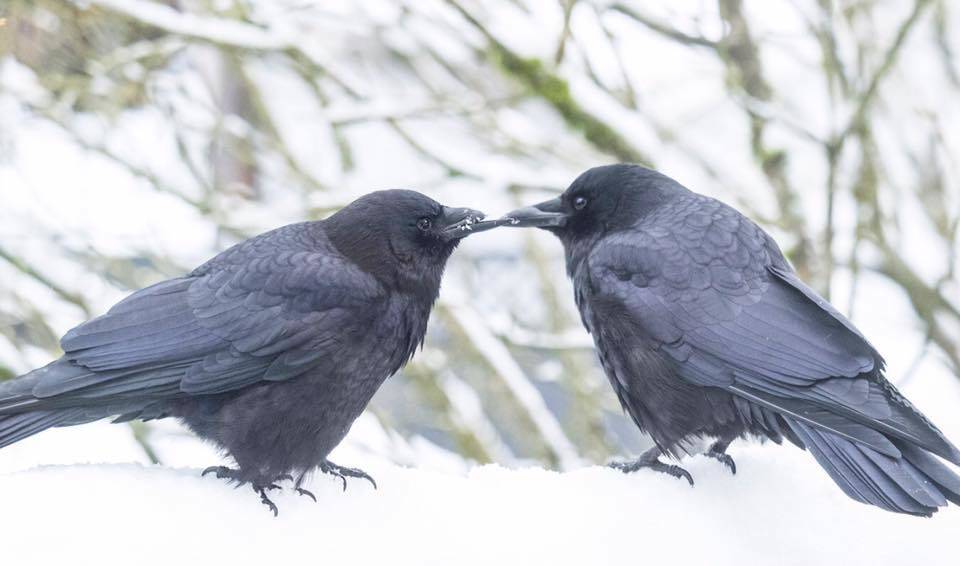Through pain and hardship, a crow couple endured.
British Columbian artist June Hunter has recounted the tale of a disabled crow and his mate working together with the strength of love. The story caught the eye of San Juan Island’s Wolf Hollow Rehabilitation Center Executive Director Chandra Stone, who shared the endearing account on the center’s Facebook page. Hunter said the blog post has been read on her website over 6,000 times.
“[The story] spoke to me,” said Stone, “because it shows that animals have just as much or more compassion than we do sometimes.”
On her blog, Hunter wrote about watching a male crow, whom she named George, outside her Vancouver studio. George learned to adapt to a beak deformity with the help of his mate before he passed away. He had a broken top beak, which forced George to turn his head upside down to feed. Without two sides to his beak to use like tongs, the bottom, longer part prevented him from picking up pieces off a flat service.
His other half, Mabel, regularly stood guard, reported Hunter, while George scooped food into his lopsided beak. Crows are known for their intelligence, often illustrated in their ability to solve puzzles, both manmade and natural, to find food.
Penny Harner, a Wolf Hollow staff rehabilitator, said love also comes naturally to the species.
“They are generally very caring for their entire family,” she said.
Crows live in family groups and sometimes mate with the same partner for many years, she added. Wolf Hollow staff and volunteers rehabilitate injured and orphaned wildlife and try to return the individual crows who come to the center, back to their families, as much as possible.
Last year, the center’s crew helped 10 adolescent crows and two adults. Young crows, explained Harner, are often scooped up by well-meaning people who assume they are abandoned.
Yet, Harner explained, young crows typically leave the nest before they are able to fly, and adult crows still feed them on the ground. Those who notice what appears to be abandoned fledglings should call the center at 360-378-5000 before picking them up, she added.
Crows are in good company with other island wildlife who tend to stay with partners for many years. These include swans, geese, eagles and foxes, explained Harner.
Today, Hunter said Mabel lives on without her partner. After George passed away, Hunter buried him in the backyard next to the family pets. She continues to marvel at how many resonate with the bond between her garden’s crows.
“We mostly don’t notice the dramas going on in the lives of creatures we share the land and the city with,” she said. “If we can open our eyes to the significance of different lives being lived, it offers perspective and fosters empathy — both for other species and fellow humans.”
All types of adoration, wrote Hunter, should be honored as Feb. 14 rolls around.
“… This Valentine’s Day, we can celebrate the many kinds of love,” she wrote. “From the giddy excitement of first infatuation, to … [the] lifelong kind that George and Mabel enjoy[ed].”
Read Hunter’s blog at www.urbannature.blog, and learn more about Wolf Hollow at www.wolfhollowwildlife.org.



